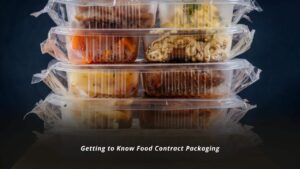What are the different types of food contract packaging?

1. Food Contract Packaging
2. Film Packaging
3. Flexible Packaging
4. Bulk Containers
5. Rigid Containers
6. Closures
7. Specialty Packaging
8. Food Service
9. Glass
10. Plastic
11. Metal
12. Wood
13. Paperboard & Cartons
14. Biodegradable
15. Sustainable
16. Recycled/Reusable
17. Labeling & Barcoding
18. Packaging Waste
19. Packaging Innovations & Trends
20. Packaging Recycling
What are the different types of food packaging materials?
There are four main types of food packaging materials: paper, plastic, glass, and metal. Paper is the cheapest type of material but it cannot be used in microwaves or hot ovens because it will catch fire. Plastic is the most popular type of material used for food packaging because it can be microwaved and put in a hot oven without catching on fire as paper does. Glass is not used for food packaging because it will break and cut you. Metal is not used for food packaging because it can be sharp and cut you.
What are the benefits of using food contract packaging?
There are many benefits to using food contract packaging. Food contract packaging is designed for transporting and storing food in a way that makes it more convenient, safer, and less expensive than traditional methods of storage.
Food contract packaging is used in many different ways. It can be used to transport food from one place to another, or it can be used for storage purposes until the product reaches its final destination.
Food contract packaging can be used for transporting food from one place to another. It is designed to keep the product safe and secure during its trip, while also keeping it fresh and in good condition.
Food packaging can also be used for storage purposes. It is designed to keep food items fresh and safe until they reach their final destination. Food contract packaging is also a cost-effective way of packaging food items.
Food contract packaging is used for a variety of products, including fruits, vegetables and meats. It is also used to package many other types of foods as well. Food contract
What are the challenges of using food contract packaging?
The challenges of using food contract packaging are that the package must be able to hold up in a variety of conditions, from high heat and humidity to freezing cold. Furthermore, it is crucial for the package to be able to withstand rough handling and not leak.
What are the different types of food contact packaging?
There are many different types of food contact packaging, and they vary in their purpose. The most common type is a plastic container with a lid that will protect the food inside from oxygen and moisture.
Some of the other types are metal cans, glass jars, bottles, plastic tubs with lids, or screw-on caps.
What are the challenges of food contact packaging?
There are many challenges in food contact packaging, such as shelf life, safety, and hygiene. Some of the key issues that can arise with food contact packaging include:
-Bacterial growth-
-Corrosion (also known as rusting)-
-Pesticide migration-
-Adhesion of food to the packaging surface.
The most common materials used in food contact packaging are polymer films, metals, and glasses. Polymer films are an extremely versatile material and are used in food packaging for their barrier properties, such as oxygen and water vapour.
Polymer films can be made in different thicknesses (from microns to millimetres) and can be used to make bottles, jars, cups, and bags. Also, polymer films are typically made from polyethylene (PE), polypropylene (PP) or high-density polyethylene (HDPE), low-density polyethylene (LDPE), and linear low-density polyethylene (LLDPE). These films are also used in packaging for their clarity, strength, and resistance to puncture. Polymer films are used for packaging fresh foods, such as meat, fish, poultry, fruits, and vegetables; some dairy products; frozen foods; baked goods; and non-food items, such as medical supplies.
Polymer films are used in packaging for their clarity, strength, and resistance to puncture. While they can be recycled, they are difficult to recycle into new polymer films because of their low melting point.
